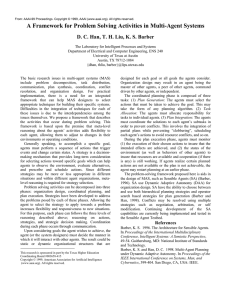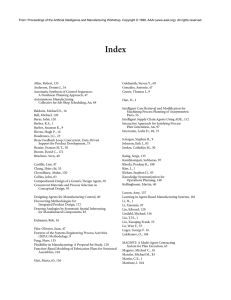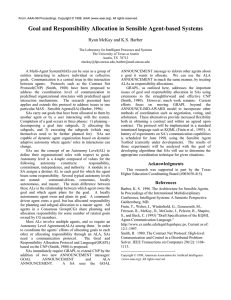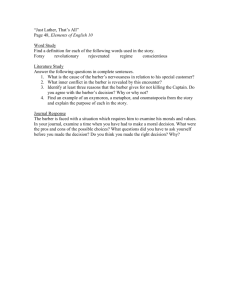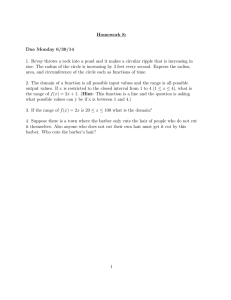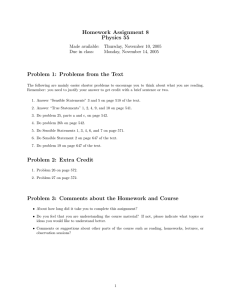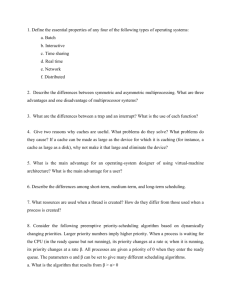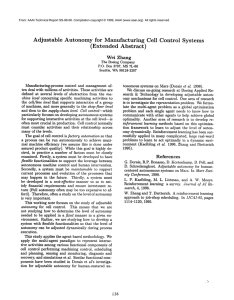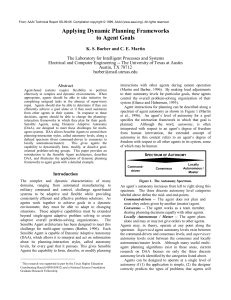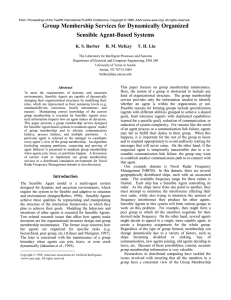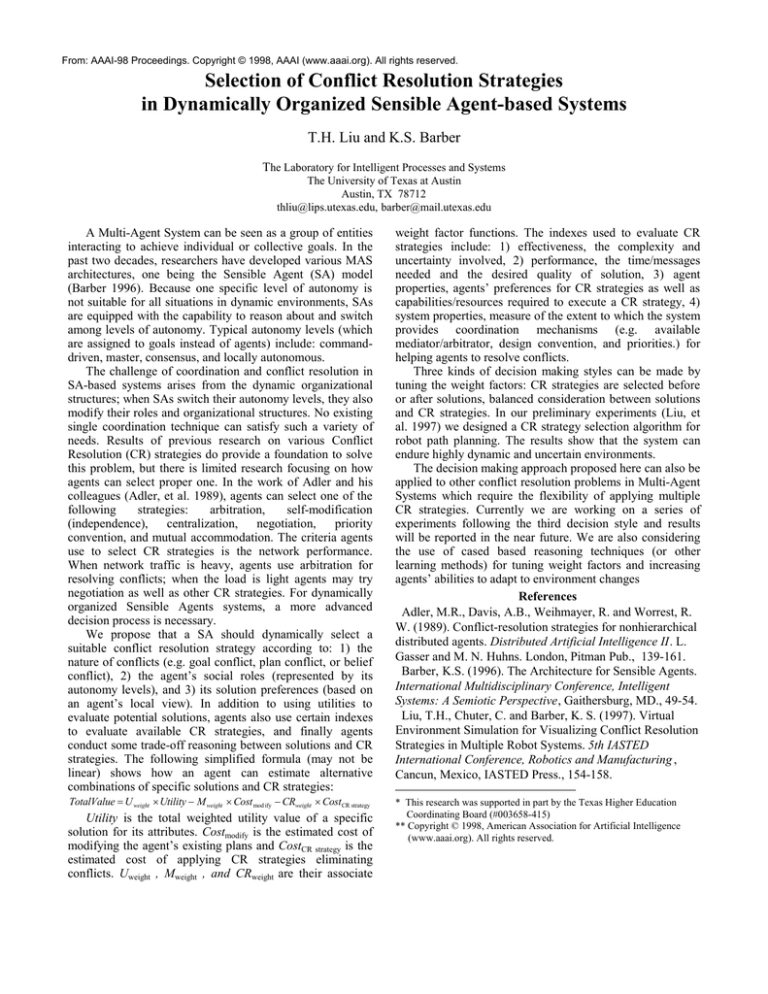
From: AAAI-98 Proceedings. Copyright © 1998, AAAI (www.aaai.org). All rights reserved.
Selection of Conflict Resolution Strategies
in Dynamically Organized Sensible Agent-based Systems
T.H. Liu and K.S. Barber
The Laboratory for Intelligent Processes and Systems
The University of Texas at Austin
Austin, TX 78712
thliu@lips.utexas.edu, barber@mail.utexas.edu
A Multi-Agent System can be seen as a group of entities
interacting to achieve individual or collective goals. In the
past two decades, researchers have developed various MAS
architectures, one being the Sensible Agent (SA) model
(Barber 1996). Because one specific level of autonomy is
not suitable for all situations in dynamic environments, SAs
are equipped with the capability to reason about and switch
among levels of autonomy. Typical autonomy levels (which
are assigned to goals instead of agents) include: commanddriven, master, consensus, and locally autonomous.
The challenge of coordination and conflict resolution in
SA-based systems arises from the dynamic organizational
structures; when SAs switch their autonomy levels, they also
modify their roles and organizational structures. No existing
single coordination technique can satisfy such a variety of
needs. Results of previous research on various Conflict
Resolution (CR) strategies do provide a foundation to solve
this problem, but there is limited research focusing on how
agents can select proper one. In the work of Adler and his
colleagues (Adler, et al. 1989), agents can select one of the
following
strategies:
arbitration,
self-modification
(independence),
centralization,
negotiation,
priority
convention, and mutual accommodation. The criteria agents
use to select CR strategies is the network performance.
When network traffic is heavy, agents use arbitration for
resolving conflicts; when the load is light agents may try
negotiation as well as other CR strategies. For dynamically
organized Sensible Agents systems, a more advanced
decision process is necessary.
We propose that a SA should dynamically select a
suitable conflict resolution strategy according to: 1) the
nature of conflicts (e.g. goal conflict, plan conflict, or belief
conflict), 2) the agent’s social roles (represented by its
autonomy levels), and 3) its solution preferences (based on
an agent’s local view). In addition to using utilities to
evaluate potential solutions, agents also use certain indexes
to evaluate available CR strategies, and finally agents
conduct some trade-off reasoning between solutions and CR
strategies. The following simplified formula (may not be
linear) shows how an agent can estimate alternative
combinations of specific solutions and CR strategies:
weight factor functions. The indexes used to evaluate CR
strategies include: 1) effectiveness, the complexity and
uncertainty involved, 2) performance, the time/messages
needed and the desired quality of solution, 3) agent
properties, agents’ preferences for CR strategies as well as
capabilities/resources required to execute a CR strategy, 4)
system properties, measure of the extent to which the system
provides coordination mechanisms (e.g. available
mediator/arbitrator, design convention, and priorities.) for
helping agents to resolve conflicts.
Three kinds of decision making styles can be made by
tuning the weight factors: CR strategies are selected before
or after solutions, balanced consideration between solutions
and CR strategies. In our preliminary experiments (Liu, et
al. 1997) we designed a CR strategy selection algorithm for
robot path planning. The results show that the system can
endure highly dynamic and uncertain environments.
The decision making approach proposed here can also be
applied to other conflict resolution problems in Multi-Agent
Systems which require the flexibility of applying multiple
CR strategies. Currently we are working on a series of
experiments following the third decision style and results
will be reported in the near future. We are also considering
the use of cased based reasoning techniques (or other
learning methods) for tuning weight factors and increasing
agents’ abilities to adapt to environment changes
References
Adler, M.R., Davis, A.B., Weihmayer, R. and Worrest, R.
W. (1989). Conflict-resolution strategies for nonhierarchical
distributed agents. Distributed Artificial Intelligence II. L.
Gasser and M. N. Huhns. London, Pitman Pub., 139-161.
Barber, K.S. (1996). The Architecture for Sensible Agents.
International Multidisciplinary Conference, Intelligent
Systems: A Semiotic Perspective, Gaithersburg, MD., 49-54.
Liu, T.H., Chuter, C. and Barber, K. S. (1997). Virtual
Environment Simulation for Visualizing Conflict Resolution
Strategies in Multiple Robot Systems. 5th IASTED
International Conference, Robotics and Manufacturing ,
Cancun, Mexico, IASTED Press., 154-158.
TotalValue = U weight × Utility − M weight × Cost mod ify − CRweight × Cost CR strategy
* This research was supported in part by the Texas Higher Education
Coordinating Board (#003658-415)
** Copyright © 1998, American Association for Artificial Intelligence
(www.aaai.org). All rights reserved.
Utility is the total weighted utility value of a specific
solution for its attributes. Costmodify is the estimated cost of
modifying the agent’s existing plans and CostCR strategy is the
estimated cost of applying CR strategies eliminating
conflicts. Uweight , Mweight , and CRweight are their associate

